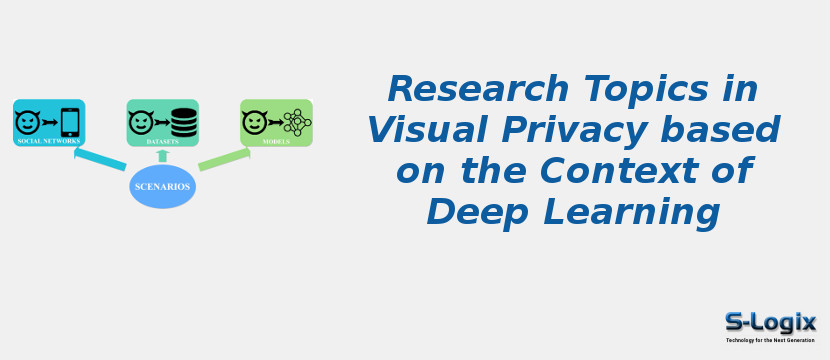Visual privacy protects confidential visual information from unaccredited access or use in the context of deep learning. In deep learning, visual data is frequently applied to train models, and this data may contain personal or sensitive information that must be secured.
To assure visual privacy, several techniques are utilized, including data encryption, data anonymization, and differential privacy. These techniques intend to avert the unaccredited extraction of confidential information from visual data or to reduce the risk of such information being revealed.
By securing visual privacy, organizations can construct trust with their customers, deplete the risk of legal liabilities, and manage the confidentiality of sensitive information.
Protecting sensitive information: Visual privacy protects confidential information, including faces, license plates, and other identifiable information, from being accessed or utilized without consent.
Constructing trust with customers: By securing visual data, organizations can construct trust with their customers and manage their privacy, becoming progressively significant as deep learning algorithms become more common.
Compliance with regulations: Visual privacy is frequently obligatory to observe with regulations, including the General Data Protection Regulation (GDPR) and the Health Insurance Portability and Accountability Act (HIPAA), which need the protection of personal information.
Reducing legal liabilities: By securing visual data, organizations can deplete their legal liabilities and minimize the risk of lawsuits related to privacy violations.
Managing the confidentiality of sensitive information: Visual privacy assists in managing the confidentiality of sensitive information, including medical images, government documents, and other confidential data.
Generative Adversarial Networks (GANs): GANs can be utilized to produce synthetic data that can be used to train deep learning models, minimizing the need for real visual data and thus improving visual privacy.
Federated Learning: Federated learning involves training a deep learning model over multiple devices or data sources without exchanging raw data, which can improve visual privacy by keeping confidential data on individual devices or data sources.
Balancing privacy with accuracy: Visual privacy methods, including data anonymization and differential privacy, can result in the loss of information, which can negatively impact the accuracy of deep learning models. Discovering a balance between visual privacy and accuracy is a challenge.
Handling large-scale data: Visual data is high-dimensional and large-scale, making it problematic to process and analyze utilizing traditional privacy techniques. Deep learning algorithms are better prepared to deal with this data and initiate novel privacy concerns.
Establishing security of encrypted data: Encrypting visual data can impart privacy, but it also needs secure key management to insure that the data remains protected.
Protecting against adversarial attacks: Adversarial attacks are designed to circumvent visual privacy techniques, and they can be an important challenge in assuring visual privacy
Maintaining privacy over distributed systems: In distributed systems, such as federated learning, visual data may be stored on different devices or data sources, making it challenging to ensure compatible privacy across the complete system
Keeping pace with growing privacy laws and regulations: Privacy laws and regulations are consistently evolving, and it can be challenging for organizations to keep pace with the changes and insure compliance.
Facial recognition: In facial recognition systems, visual privacy is important. Thus deep learning models are used to store and process confidential information about individuals. Encryption and anonymization techniques can be applied to protect this information.
Medical imaging: Visual privacy is essential in medical imaging, as medical images may contain sensitive personal information about patients. Data encryption, differential privacy, and federated learning are popularly used to ensure the privacy of medical images.
Autonomous vehicle systems: Visual data from cameras and sensors utilized in autonomous vehicles must be secured to ensure the privacy and security of personal information. Encryption and differential privacy is used to protect this data.
Surveillance systems: Visual privacy is critical in surveillance systems, as these systems may collect sensitive information about individuals, such as their faces, license plates, and movements. Anonymization and differential privacy techniques are exploited to protect this information.
Social media: Visual data posted on social media can contain sensitive information about individuals, such as their faces, locations, and activities. Encryption, anonymization, and differential privacy techniques are used to protect social media data.
1. Advancements in privacy-preserving techniques: As deep learning algorithms continue to grow, new privacy-preserving techniques emerge that deliver improved protection for visual data.
2. Integration with other privacy technologies: Visual privacy is increasingly incorporated with other privacy technologies, including blockchain and secure multiparty computation (MPC), to improve privacy protection for visual data.
3. Wider adoption of privacy-preserving techniques: Utilization of privacy-preserving techniques in visual data applications is become more widespread, even in industries such as healthcare, finance, and retail.
4. Development of privacy regulations and standards: Governments and organizations focus on developing regulations and standards to ensure the privacy of visual data, including in the context of deep learning.
